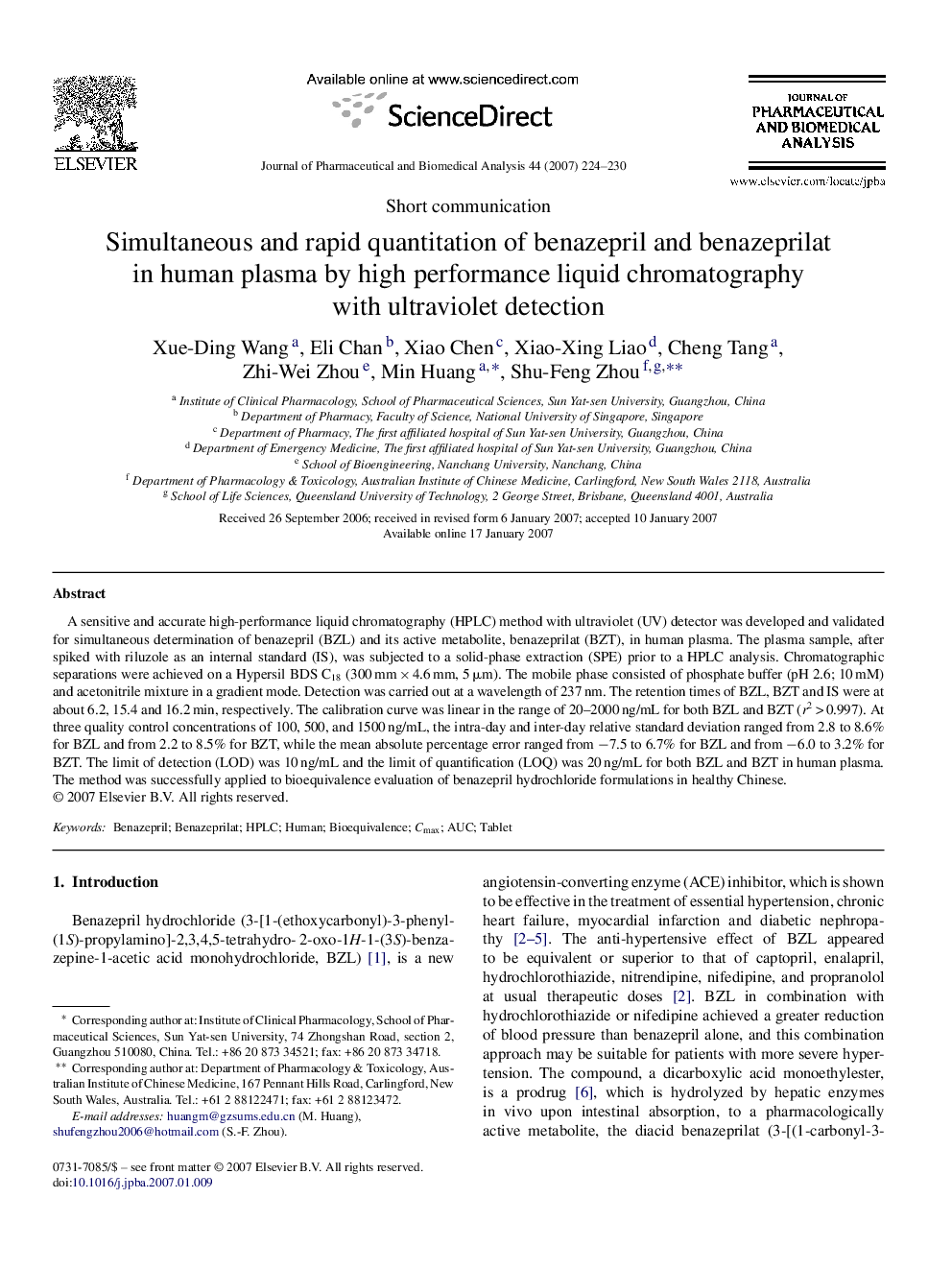| Article ID | Journal | Published Year | Pages | File Type |
|---|---|---|---|---|
| 1224313 | Journal of Pharmaceutical and Biomedical Analysis | 2007 | 7 Pages |
A sensitive and accurate high-performance liquid chromatography (HPLC) method with ultraviolet (UV) detector was developed and validated for simultaneous determination of benazepril (BZL) and its active metabolite, benazeprilat (BZT), in human plasma. The plasma sample, after spiked with riluzole as an internal standard (IS), was subjected to a solid-phase extraction (SPE) prior to a HPLC analysis. Chromatographic separations were achieved on a Hypersil BDS C18 (300 mm × 4.6 mm, 5 μm). The mobile phase consisted of phosphate buffer (pH 2.6; 10 mM) and acetonitrile mixture in a gradient mode. Detection was carried out at a wavelength of 237 nm. The retention times of BZL, BZT and IS were at about 6.2, 15.4 and 16.2 min, respectively. The calibration curve was linear in the range of 20–2000 ng/mL for both BZL and BZT (r2 > 0.997). At three quality control concentrations of 100, 500, and 1500 ng/mL, the intra-day and inter-day relative standard deviation ranged from 2.8 to 8.6% for BZL and from 2.2 to 8.5% for BZT, while the mean absolute percentage error ranged from −7.5 to 6.7% for BZL and from −6.0 to 3.2% for BZT. The limit of detection (LOD) was 10 ng/mL and the limit of quantification (LOQ) was 20 ng/mL for both BZL and BZT in human plasma. The method was successfully applied to bioequivalence evaluation of benazepril hydrochloride formulations in healthy Chinese.
